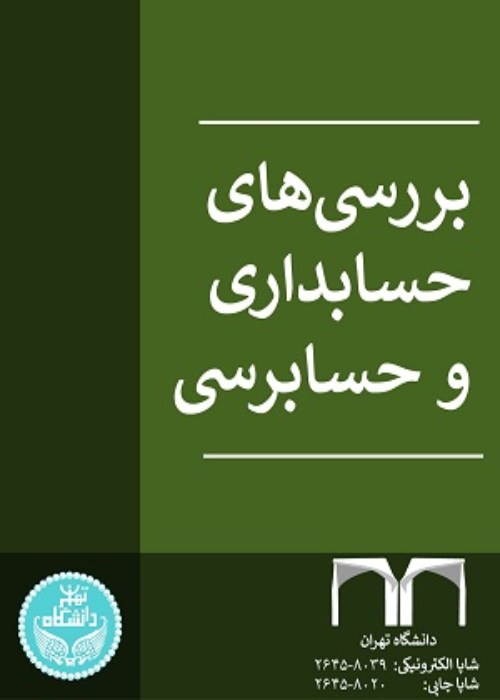An Empirical investigation of Inventory Stickiness
Recent research shows that expenses and assets change much less when income decreases than they do when income increases. Assets and expenses which behave in this manner are referred to as "sticky". In other words, when the income increases, an increase in variable costs and assets in a certain ratio is expected, however, the concept of stickiness implies that with any decrease in income, the amount of reduction in costs and related assets should be less than the number of their changes when incomes increase. In light of Iran's specific economic conditions, this study explores whether inventory stickiness exists in the manufacturing and trading companies and whether changes in inventory (decreases) during income reductions are equal to changes in inventory (increases) during income increases; a question not previously addressed by Iranian researchers.
This study employed the panel data approach to testing the hypotheses, and the model of Anderson et al. (2003) was used to measure inventory stickiness. After applying certain restrictions, the statistical sample consisted of 5,924 firm years from 2006 to 2021.
The results indicated that Iranian companies experience inventory stickiness, and this phenomenon is most notable in the automotive, rubber, plastic, and pharmaceutical industries.
Various studies have considered and tested the stickiness phenomenon, particularly in the case of costs, including the study by Anderson et al. (2003) as well as others applying their presented model. The majority of them have documented the stickiness of costs. Recent research has sought to explain the underlying causes of this phenomenon. A company's inventories are one of its current assets, which are used to generate income in future periods. They are sometimes manufactured to meet unpredictable needs, as well as other reasons, including a lack of agility in adjusting production volume according to demand, excessive costs associated with reducing outputs, shutting down production lines (dismantling costs), and forecasting an increase in production by management. It is expected that inventories exhibit a sticky behavior. Thus, their changes (decreases) in response to a decrease in income should be less than their changes (increases) in response to an increase in income. This is reasonable in some cases, particularly in countries facing acute inflation and in companies that rely heavily on imports for their raw material supply. According to the complexities of different industries and the different economic considerations they have in supplying materials and goods, companies adopt different strategies for maintaining inventories. In order to cope with economic fluctuations, managers should consider inventory stickiness as part of their policies. Several studies can be conducted to examine the factors and conditions affecting this phenomenon.
- حق عضویت دریافتی صرف حمایت از نشریات عضو و نگهداری، تکمیل و توسعه مگیران میشود.
- پرداخت حق اشتراک و دانلود مقالات اجازه بازنشر آن در سایر رسانههای چاپی و دیجیتال را به کاربر نمیدهد.



